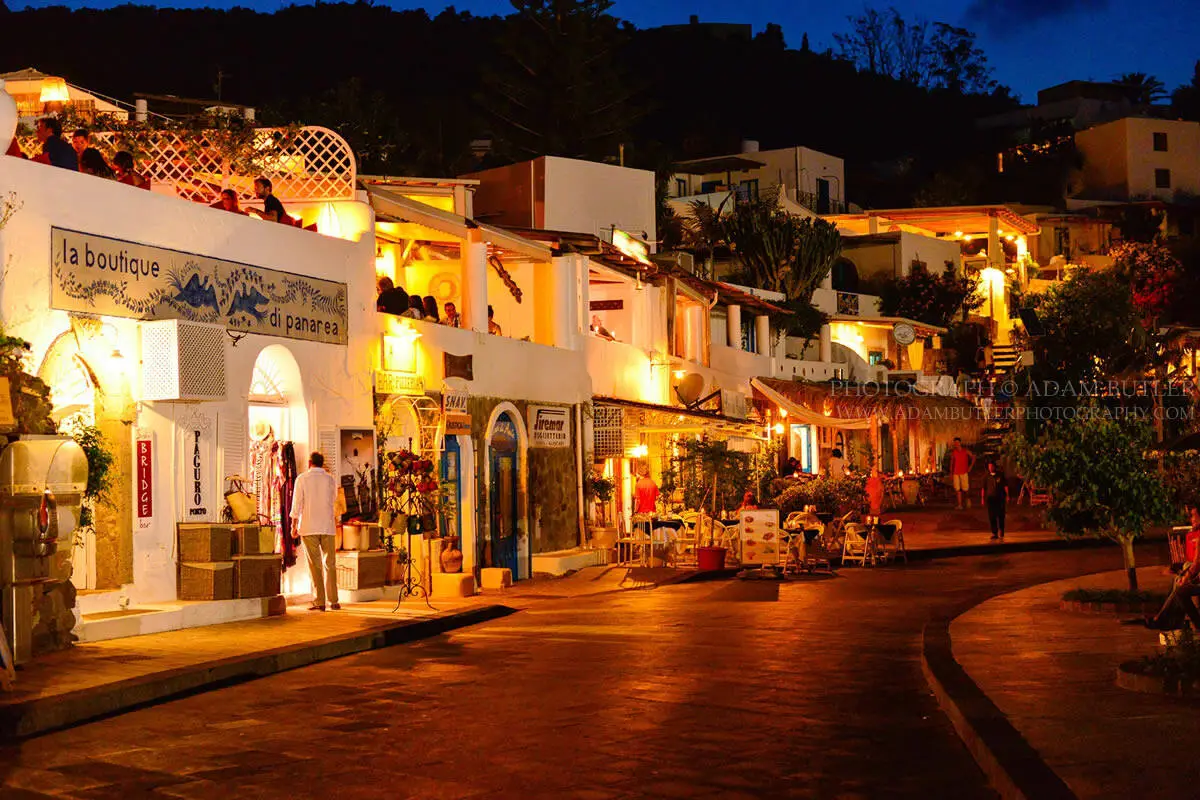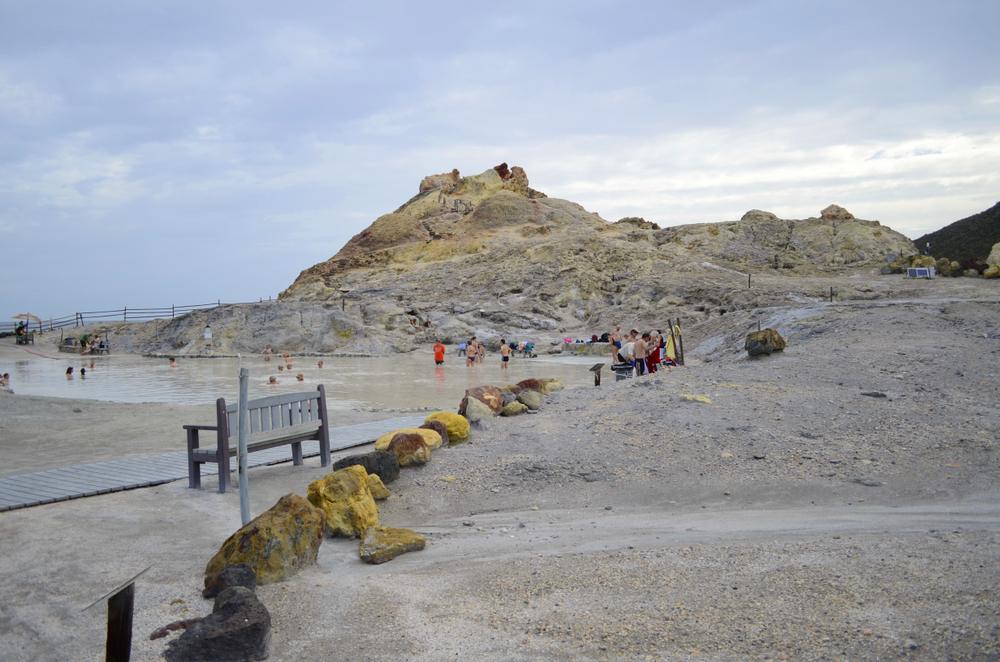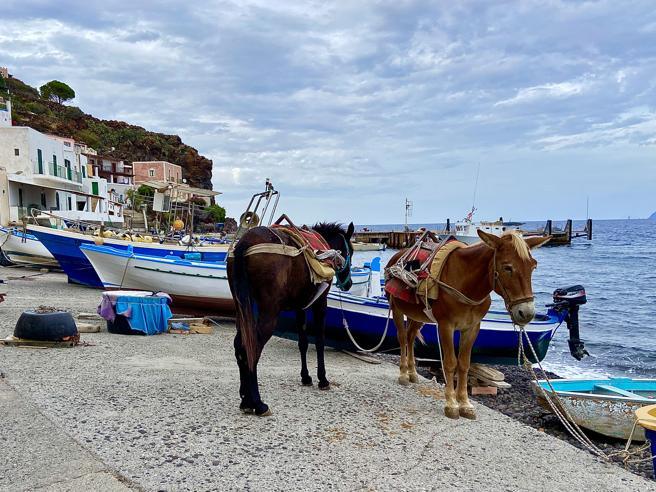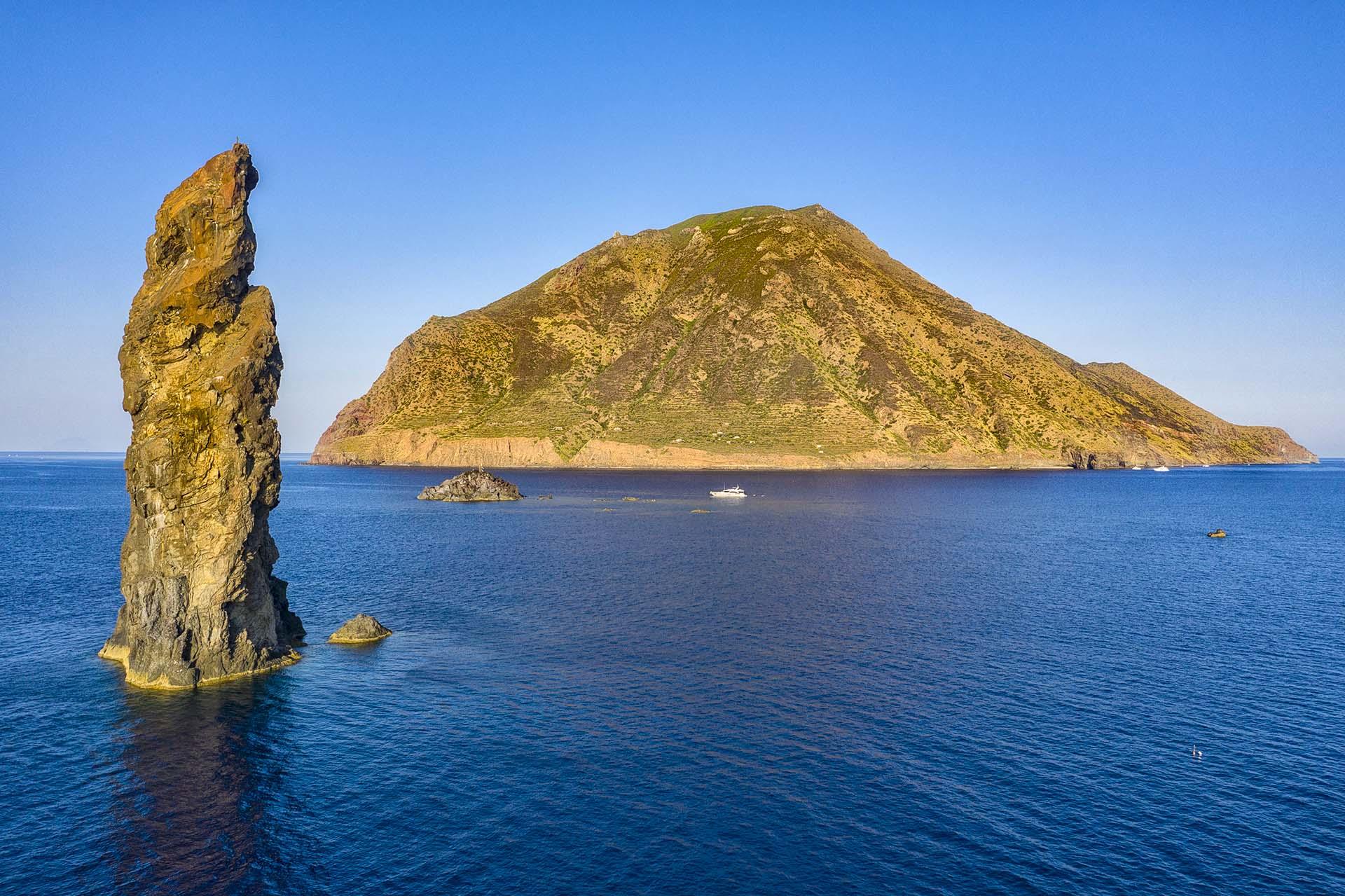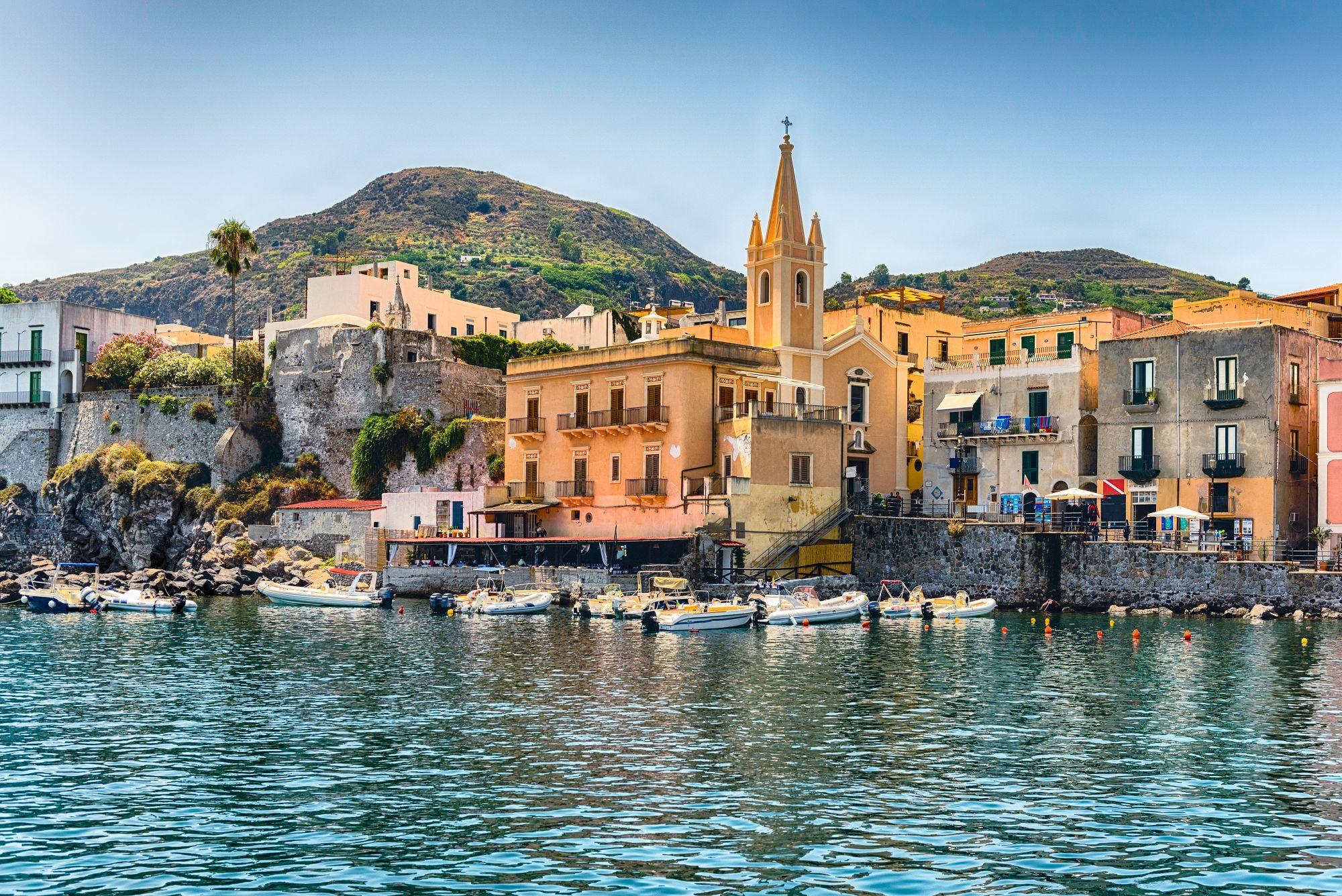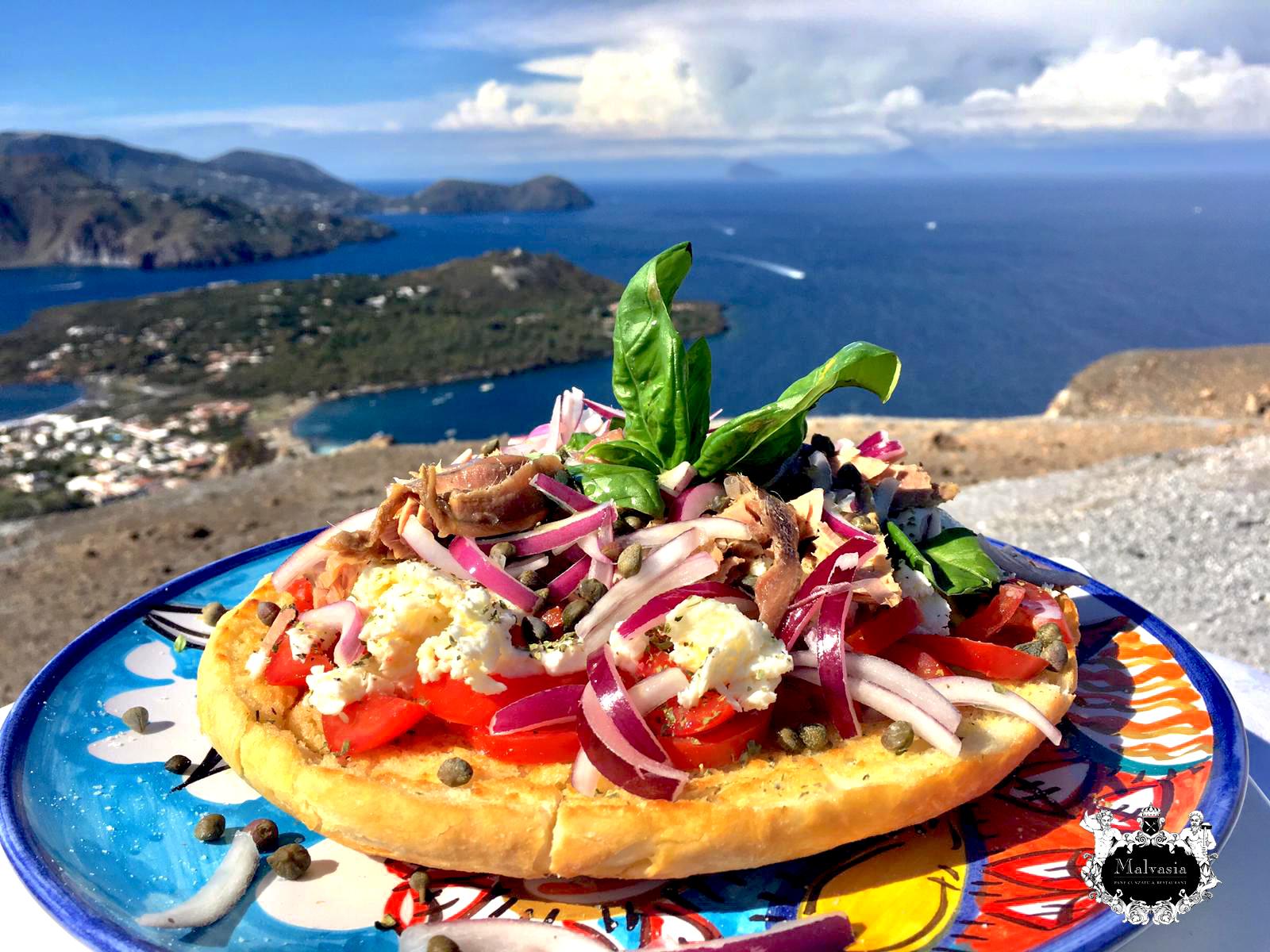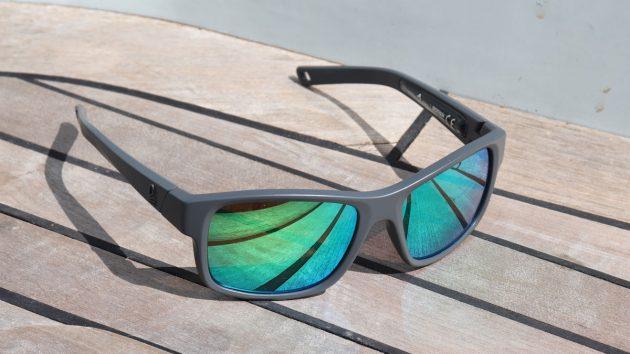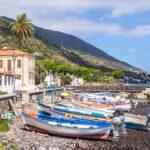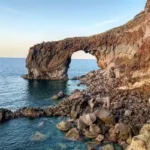Salina

Salina: The Green Island. It’s the largest after Lipari. It boasts three municipalities but has a more rural aspect compared to the main island. It was the set of the famous film ‘Il Postino’ by Massimo Troisi and has always enchanted its visitors with the sense of serenity and beauty it emanates. It’s the home of Malvasia wine, which is mainly produced in Malfa. On its land, there are vast caper cultivations. Life mostly takes place in Santa Marina, which is the main port for ships and hydrofoils (the other, smaller one is in Rinella), where the evening stroll is concentrated and where most shops are located. Here you can visit the 18th-century Church of Santa Marina and reach the Middle Bronze Age archaeological village of Portella. By renting a car or scooter, or simply taking the bus that connects the small towns of the island, you can reach the other villages. Going south, you reach Lingua, a small fishing village. Here there are two… actually three must-see visits. The first is the small lake with its lighthouse, an old salt pan that can be seen after the 18th-century bridge of Vallone Zappini (an ancient mule track recently brought to light). Also worth seeing is the Ethno-anthropological Museum where the interior of a rural house has been reconstructed. Finally, don’t miss Alfredo’s bar where you can taste what is probably the best granita in the entire archipelago, available in many different flavors… coffee, lemon, strawberry, mulberry, almond, to be strictly accompanied by a good brioche. From Santa Marina going north, you arrive at Malfa. The road to get there, between vineyards and ravines sloping down to the sea, is spectacular in itself. Malfa is the most populated municipality on the island and rests on the Valle di Giovi that slopes down to the sea. Here, Malvasia vineyards are cultivated, capers are grown, and raisins are produced. There’s a small port, Scario Galera, accessible only to shallow-draft boats. The patron saint of Malfa is San Lorenzo, and the fireworks in his honor on the night of August 10th are beautiful. From Malfa, the road passes Monte Porri to reach Pollara, a former crater with a diameter of more than 1 km. It’s in this small village consisting of a few scattered houses that you find the house of Troisi’s Postman, now converted into a B Pollara beach is probably one of the most beautiful in the entire archipelago. Back in Malfa, the paved road leads to Leni and Rinella. Leni extends on the plateau between the two volcanoes, Fossa delle Felci and Monte Porri. Rinella has recently developed from a tourism perspective; until a few years ago, it only had a few fishermen’s houses, the maritime port, and boat shelters carved into the tuff along the coast. On the greenest island of the archipelago, it’s possible to take many walks, and hiking enthusiasts will have a field day: the climb to reach Paolonoci, the ascent to Fossa delle Felci… Sea lovers will also have plenty to enjoy… starting from Santa Marina, you reach Capo Faro and then, coasting along the valleys of the volcanic peaks, you pass in front of Scalo Galera and Scario beach. You arrive at Malfa through a lush coast, and in the distance, you can see the tip of Perciato. You reach the splendid bay of Pollara and the Faraglione. The bay is closed by Filo di Branda, imposing reddish rocks overlooking the sea. After passing Praiola, you reach the Racina cave that precedes Punta Marcello and Punta Megna. Coasting along, you reach Rinella, whose coast is dotted with caves dug into the tuff and where, near the small port, a beautiful Liberty-style villa overlooks the sea. Continuing, you arrive under Monte Fossa delle Felci. Further on, you come in front of the precipice of Valle del Lupo, Punta delle Tre Pietre, and La Falconiera. After passing Punta Grottazza, you reach Lingua with its lighthouse. Continuing, you reach the port of Santa Marina.

